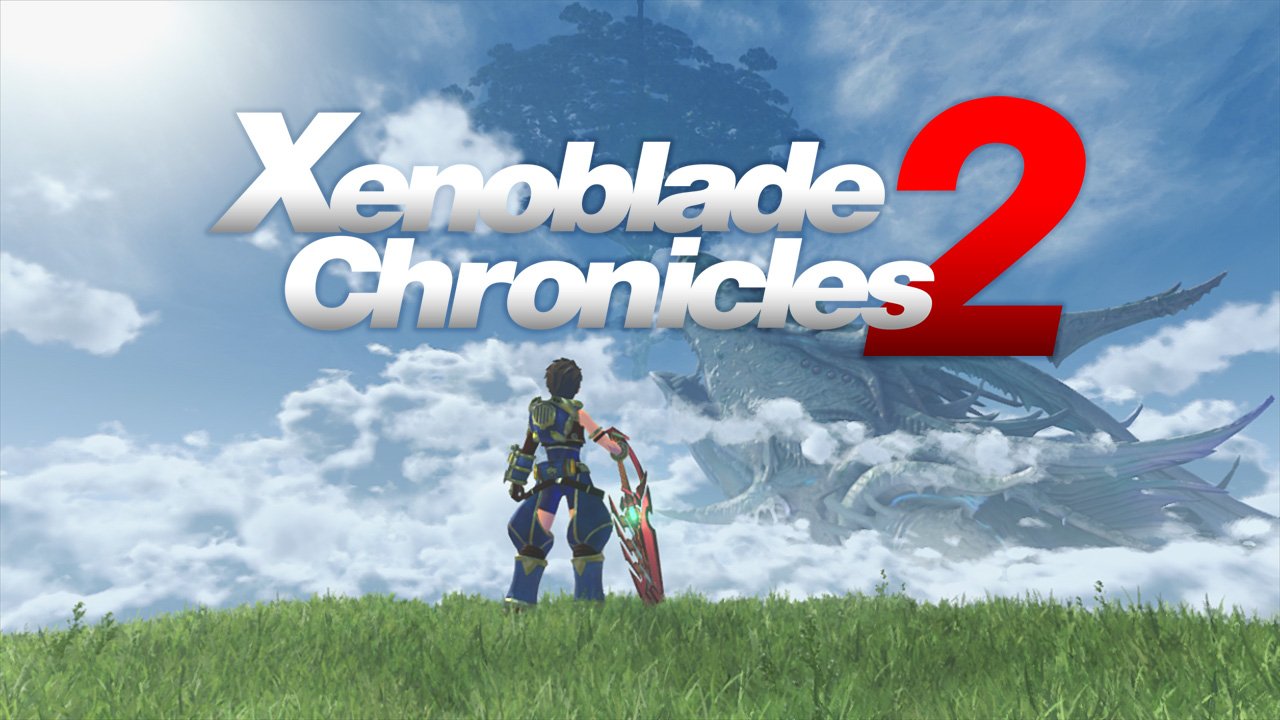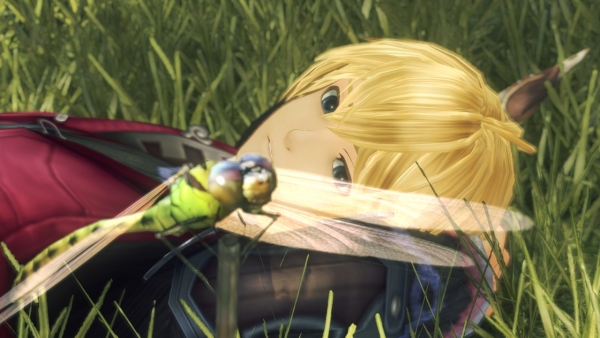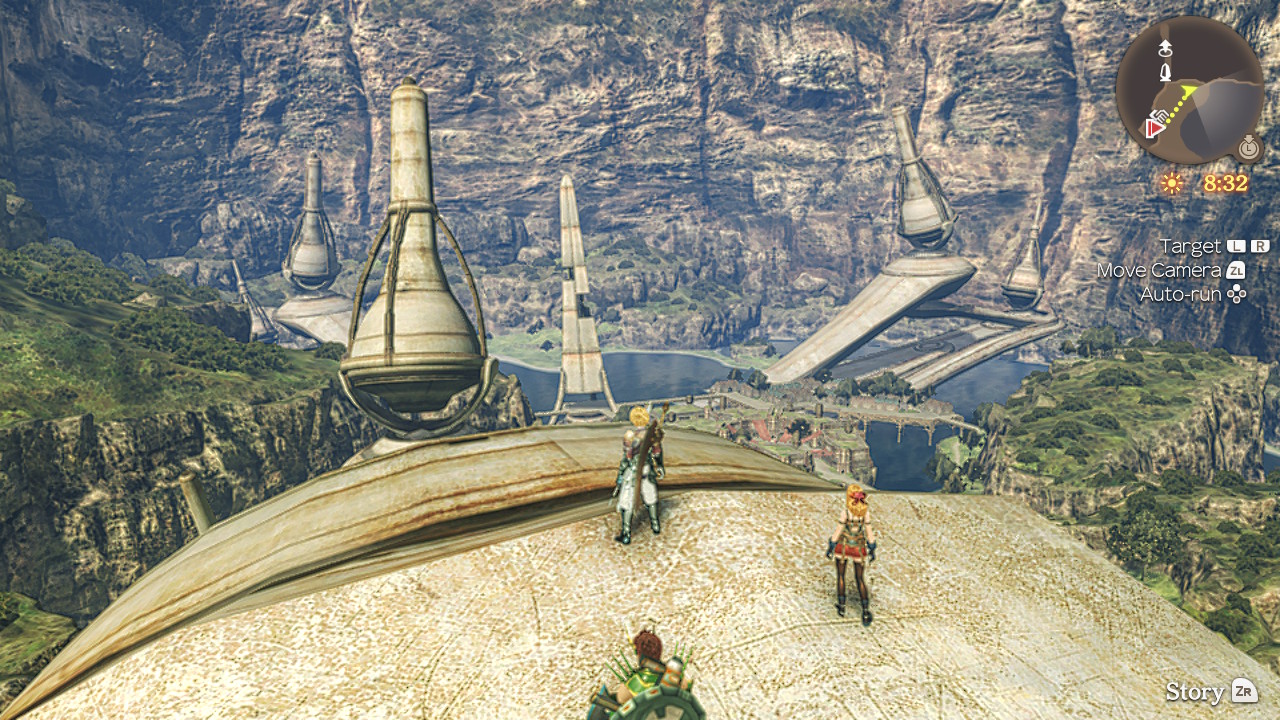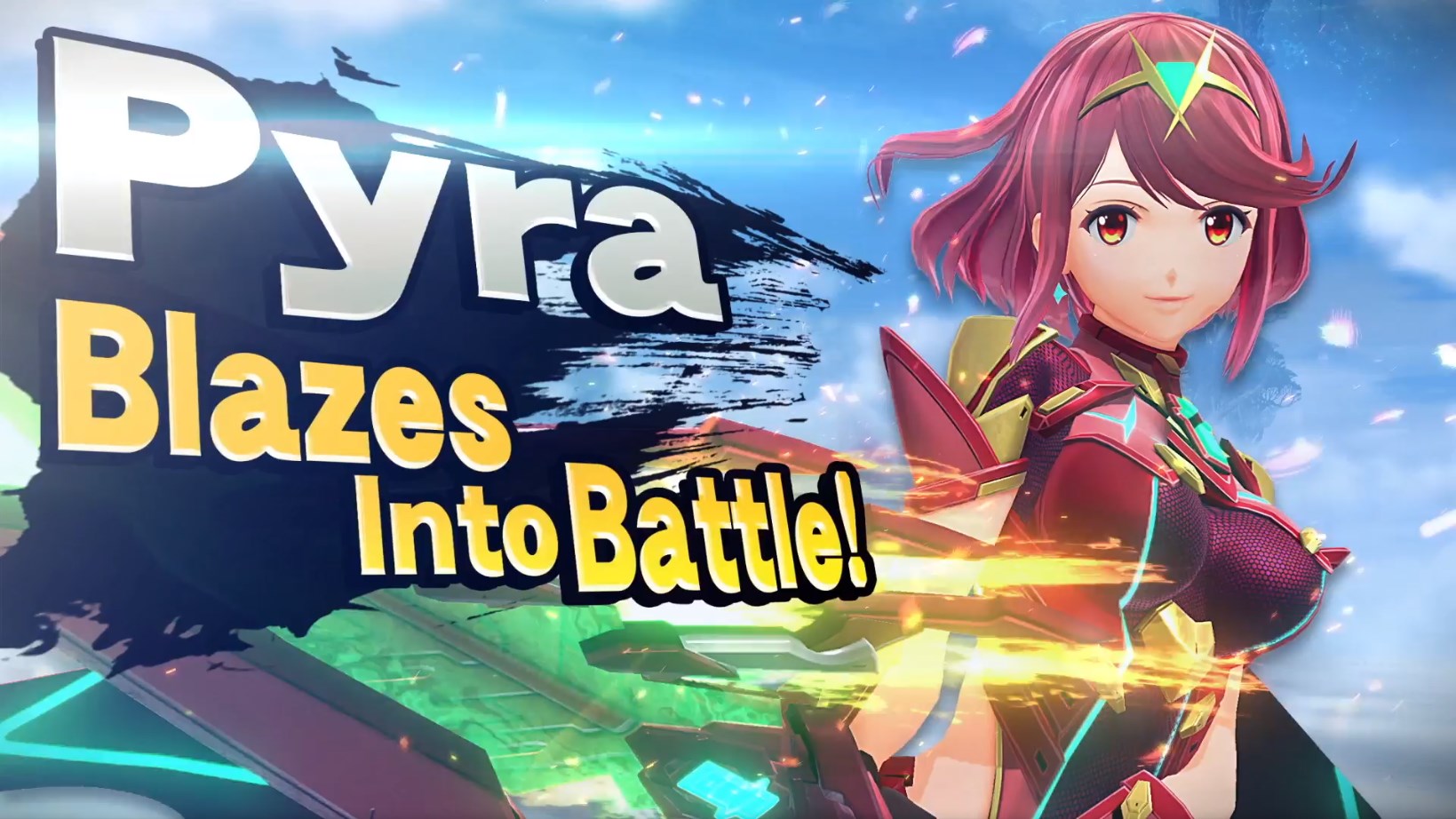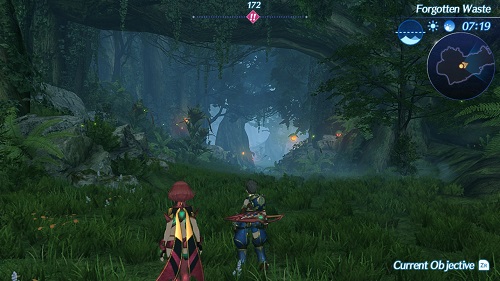
When Xenoblade Chronicles 2 was originally announced for the Nintendo Switch, I and many others, doubted that it would really release in 2017. A much faster development time was required for a 2017 release, only 2 years since the 2015 release of Xenoblade Chronicles X. Compared to the 4 and 5 years development times of the original Xenoblade Chronicles and X respectively, this appeared to be a monumental task. Well, December 2017 has come and brought Xenoblade Chronicles 2 along with it, proving the naysayers wrong. Xenoblade Chronicles 2’s stocking is filled with heaps of goodies, but they don’t seem to have been optimised for your enjoyment as much as you might have wanted.
In Xenoblade Chronicles 2 you’ll follow Rex, a young, up-and-coming Salvager of the Cloud Sea, as his world is turned upside-down. The main reason for this is his discovery, and subsequent linking, with a Blade named Pyra. Think of Blades as sentient personifications of weapons which, when summoned, are linked to a person that then becomes their Driver. While Rex and Pyra’s linking doesn’t quite fit that norm, that relationship is the main driver behind the game’s story. Pyra wants to go back to her birthplace of Elysium, while Rex believes that by going there he will be able to stop the gradual collapse and loss of the world’s continents – which happen to be on the backs of massive creatures called Titans. While the whole world seems to be out to get Rex and Pyra, the story largely focuses on them and their relationships with others. The game quickly establishes a tone of fun and discovery, but it isn’t afraid to bring in some darker aspects from time to time. There are some clichés and tropes along the way, and the writing can be pedestrian at times, but the story is highly engaging, and I found myself quickly attached to the characters. The voice-acting is generally quite good as well, with the annoyance of Tora and other Nopon’s broken English balanced out by the wonderful Welsh accent of Nia. If you’re looking for a personal and engaging story, told against a backdrop of worldwide conflict, then this is a game for you.
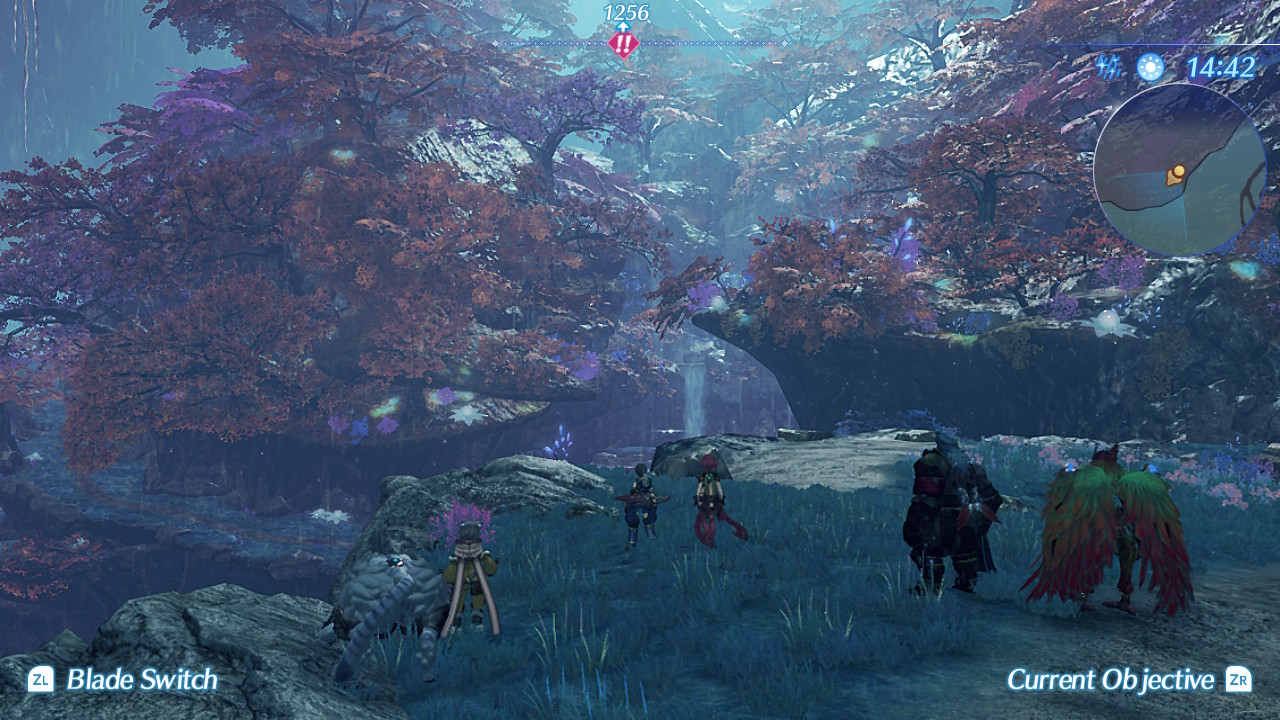
Like both Chronicles and X before it, Xenoblade Chronicles 2 utilises a battle system that is a hybrid between action and turn-based systems. If you haven’t played or seen the original games before, a good point of reference would be World of Warcraft or Final Fantasy XIV, albeit played by yourself. You are free to move in battle, but your character attacks automatically and abilities gradually charge during battle. At first glance, the idea of playing a game akin to an MMO solo might seem unusual or boring, but Monolith Soft have layered an incredible amount of complexity to its battle system to keep you engaged. Your characters automatically attack enemies within range, which charges your Driver Arts – higher damage attacks that have secondary effects, such as generating health potions or breaking an enemy’s defences. In turn, using your Driver Arts charges your Special Attack gauge – highly damaging elemental attacks.
With me so far? Well, let’s talk about combos as well. The secondary effects from Driver Arts can be chained together, further disadvantaging an enemy, into Driver Combos. This is done by using Driver Arts with complimentary effects. This could be using one that breaks an enemy’s defences, then once they’re broken toppling them over with another Driver Art, leaving the enemy in a vunerable position for longer. Similarly, Special Attacks can be used in a Blade Combo, but that system is even more complex. Special Attacks can be charged to 4 levels throughout combat, and each stage of a combo needs to be of a sequentially higher level and follow a specific tree of elements. Once you use your first Special Attack, a tree appears in the top right hand of your screen showing the options for your next 2 levels of combo. Both Driver and Blade Combos can be triggered at the same time, resulting in Fusion Combos which deliver massive damage to enemies and stat buffs to your characters. This is truly one of the most complex and intricate battle systems I’ve seen in a game, and while it sounds overwhelming, the game doles out tutorials over many hours to ensure you’re not overwhelmed.
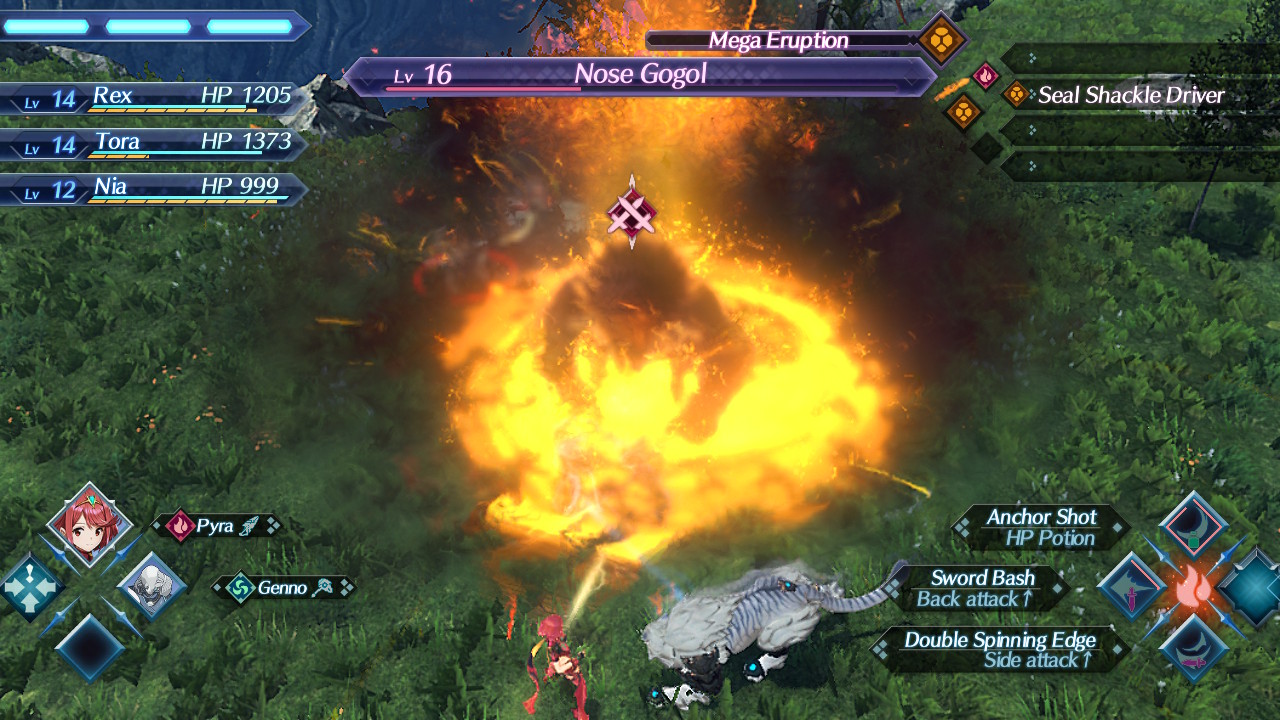
With all of these Special Attacks and Driver Combos, you’ll need a variety of Blades to keep yourself ready for any situation. To do this, you expend items called Core Crystals to summon a random Blade that is linked to one character. While the randomness of the system can sometimes be fun, what it really means is that you can never be guaranteed of what you’ll get. Did you want a rare Healer-class Blade for Nia? Well, too bad, you’re going to make do with an Attack-class instead. While you can transfer Blades between characters, this requires an extremely rare resource in the game to do, so don’t count on it as a common option. Drivers can equip up to 3 Blades at a time, with each bringing a different boost to the Driver’s stats and together creating a Class bonus for the Driver. This Class bonus is the reason you’ll find yourself wanting specific types of Blades, with Tanks boosting defence and aggro, Attackers boosting damage and Healers boosting healing effectiveness. Blades can also be further customised with Aux Cores, which provide different benefits and Core Chips which upgrade their weapons.
If you’re beginning to feel a bit overwhelmed at this point, I really don’t blame you. Throw in some additional systems for unlocking Driver stat boosts, upgrading weapon abilities, boosts from carried food and the Mercenaries you’ll send on missions and Xenoblade Chronicles 2 quickly becomes an overwhelming game. While I like a bit of complexity in my games, it feels like Monolith Soft went too far in their design of the game’s system. Instead of being a game that feels deep, the number of different progression systems you have to juggle just feels needlessly obtuse and complex. Instead of giving a sense of accomplishment, they become an act of tedium as you spend minutes wading through menus checking the 3 separate options for every Driver and Blade. Menu-based systems are immersion breaking even at the best of times, but Xenoblade’s menus and the length of time you’ll spend in them, regularly obliterates any sense of immersion the game builds.
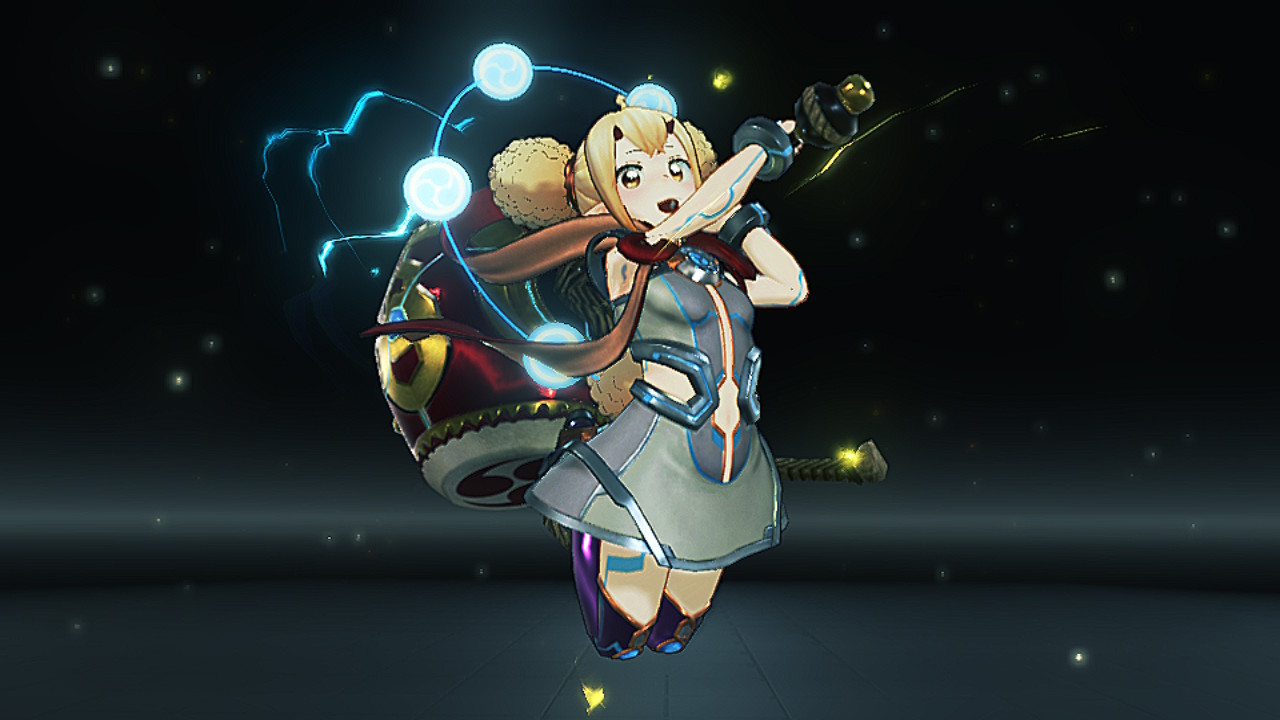
The other big immersion breaker in Xenoblade? Playing the game with the Nintendo Switch in handheld mode. While I accept that games will regularly need to be turned down a notch or two when played on the go, Xenoblade Chronicle 2’s technical performance is horrendous in handheld mode. The game regularly becomes a jagged mess, filled with pixelated characters and environments, and constant drops in framerate. When I said that the game isn’t necessarily as optimised as you would want, this is what I was talking about. It feels like Monolith Soft didn’t spend a lot of time optimising the game for handheld mode, which is especially apparent as other open-world games don’t suffer from these problems on the platform. This is especially disappointing considering how beautiful and dense the environments are when your Switch is docked. Individual leaves can be seen on trees, textures are surprisingly complex and character models look fantastic. Vistas look absolutely wonderful as you explore the game’s open environments, but all of this is lost once you remove the console from the dock. While I was excited for the game to come out in 2017, its performance on the go makes me believe it could have used a bit more time in the oven.
The real pleasure of Xenoblade Chronicles 2 is something that isn’t lost when the console is undocked – its utterly incredible soundtrack. 2017 has been a fantastic year for videogame OSTs and Xenoblade Chronicles 2 continues that trend. The music is wonderfully complex, and effortlessly influences your emotions as you experience it. I found myself exploring areas for longer than necessary, just so I could listen to the field music a bit more before progressing. I’ve said this a few times already this year, which just shows how good this year has been for music, but this is easily one of the best soundtracks I’ve heard in a game.
While releasing Xenoblade Chronicles 2 in 2017, with only a two year turnaround from Xenoblade Chronicles X, is an achievement, the game feels incomplete. Don’t get me wrong, it certainly feels feature complete and is filled with a myriad of complex, and sometimes tedious, systems. The story is engaging, if somewhat cliched at points, and the characters are interesting and personable. Where the game feels incomplete is its technical performance. The utterly horrendous performance in handheld mode, filled with reductions in image quality and framerate issues, leaves me thinking the game was rushed out for a 2017 release without the requisite technical optimisations. Xenoblade Chronicles 2 is, without a doubt, a game that any Nintendo Switch owner should try, but maybe stick with playing in docked mode wherever possible.
- Amazing soundtrack
- Engaging storyline and characters
- Complex battle system
- Beautiful vistas
- Horrendous performance in handheld mode
- Menu systems are an act of tedium
- Random nature of summoning Blades can be frustrating

